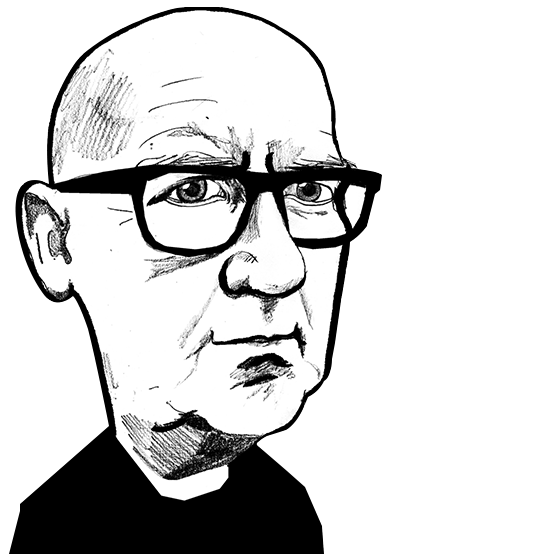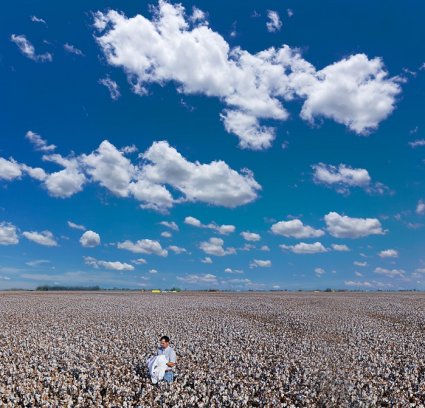
IFAI Expo 2018 calls for presentations
Editor’s Viewpoint


The top feature on Innovation in Textiles this week is not so much a technical textiles story but more of story about how advances in science are helping stakeholders in apparel industry supply chains to overcome some of their current challenges.

26th May 2016
Billy Hunter
|
Manchester
The top feature on Innovation in Textiles this week is not so much a technical textiles story but more of story about how advances in science are helping stakeholders in apparel industry supply chains to overcome some of their current challenges.
In How DNA is Taking the Guesswork Out of Premium Cotton Branding, Debra Cobb reports on how the same DNA science used to solve crimes and identify stolen or counterfeit goods is now ensuring that consumers are getting value for money when purchasing products featuring premium branded cotton.

Applied DNA Sciences (ADNAS), based in Stony Brook, New York, has developed a method of DNA testing, called fiberTyping®, to identify fibres from extra-long staple (ELS) Pima cotton (the Gossypium barbadense species), which is genetically different from upland cotton. You can read Debra’s full article here - How DNA is Taking the Guesswork Out of Premium Cotton Branding.
TTNA connects the future for technical textiles
Staying in the US - Techtextil North America (TTNA) is a unique event, highlighting the higher end of technical textiles and its supply chain, an industry (many industries actually) with a true global presence. Along with their partners, Texprocess, and the composites group JEC Americas, they had a great success, in spite of the unfortunate conflict of another monster trade show, IDEA, INDA’s nonwovens showcase, being held the same time in Boston.
How was TTNA/Texprocess? In a nutshell, excellent. TTNA/Texprocess had over 7000 pre-registrations from 33 countries and 519 exhibitors (the final figures, including those of JEC were not available at time of writing). That’s about what IDEA had in Boston – so both had a great time. Read Bill Smith’s in depth report from Atlanta here - TTNA Connects the Future for Technical Textiles.
Photoshopping for the silhouette
Meanwhile, over to Europe - Whichever way you twist and bend the story, it’s still all about stretch in the denim industry in 2016.
But renowned designer François Girbaud – who was a pioneer of stretch fabrics working with DuPont thirty years ago – not to mention introducing damaging processes such as the sandblasting and acid washing of denims back in the 1970s and 80s – has had enough of it. Find out why in Adrian Wilson’s report from PV Denim in Barcelona - Photoshopping for the silhouette.
UK manufacturer completes £1 million fabric coating plant upgrade
UK based Arville, a leading technical textiles specialist, has just completed a £1 million upgrade of its fabric coating plant in Bury, Lancashire, following a phased two-year project to overhaul the site. The 15,000 sq. ft. factory was acquired by Arville in 2000, when the group purchased P&S Textiles to further strengthen its portfolio of textile production, and create the capability to manufacture technical fabrics from end-to-end. Read the full story here - Arville completes £1 million fabric coating plant upgrade.
New project to drive development of 3D woven textile composites in UK aerospace industry
Currently, the use of 3D textile composites in aerospace industry is held back by a lack of analysis techniques. The Breakthrough Aerospace Materials project, known as BAM, commenced in March 2016 and the three-year ATI project looks to advance the manufacturing techniques and simulation of 3D textiles in the UK and to make them commercially available to the aerospace industry.
Led by Sigmatex, BAM joins UK based aerospace companies BAE Systems and Rolls-Royce along with ESI, MSC Software, Antich & Sons, M. Wright & Sons, Teledyne CML Composites and three UK 3D woven technology leading Universities – Nottingham, Manchester and Bristol. Read the full story - New project to drive development of 3D woven textile composites in UK aerospace industry.
New automated packaging system for sensitive fibres
Also in the UK - Cygnet Texkimp, a leading machinery builder and fibre specialist, has developed a fully-automated system, which is designed to protect the quality of sensitive fibres including carbon fibre while they are being wrapped, packed and palletised.
The IP6x-rated, production-scale system has been commissioned for use in a new carbon fibre processing facility where it will be used to process 1,500, six-kilogram bobbins of fibre every six hours. Read the full story - Cygnet Texkimp develops new automated packaging system for sensitive fibres.
If you would like your company or new product news published or would like to have your company featured on Innovation in Textiles, drop me an email at [email protected].
Thanks for reading Innovation in Textiles.
Billy Hunter
Editor

Business intelligence for the fibre, textiles and apparel industries: technologies, innovations, markets, investments, trade policy, sourcing, strategy...
Find out more